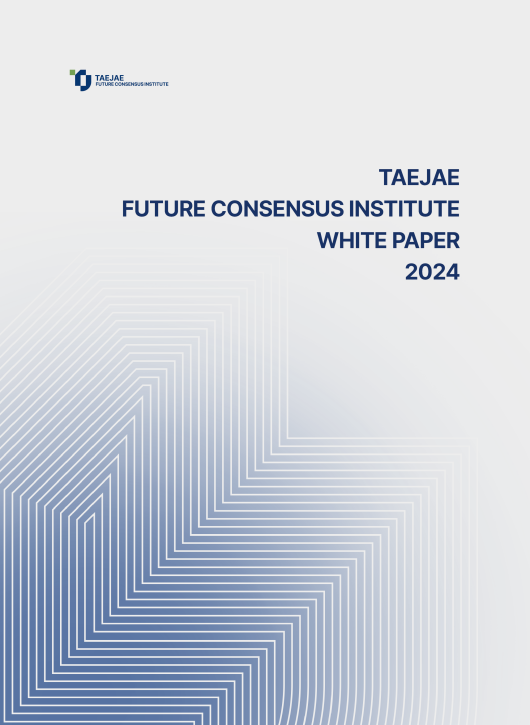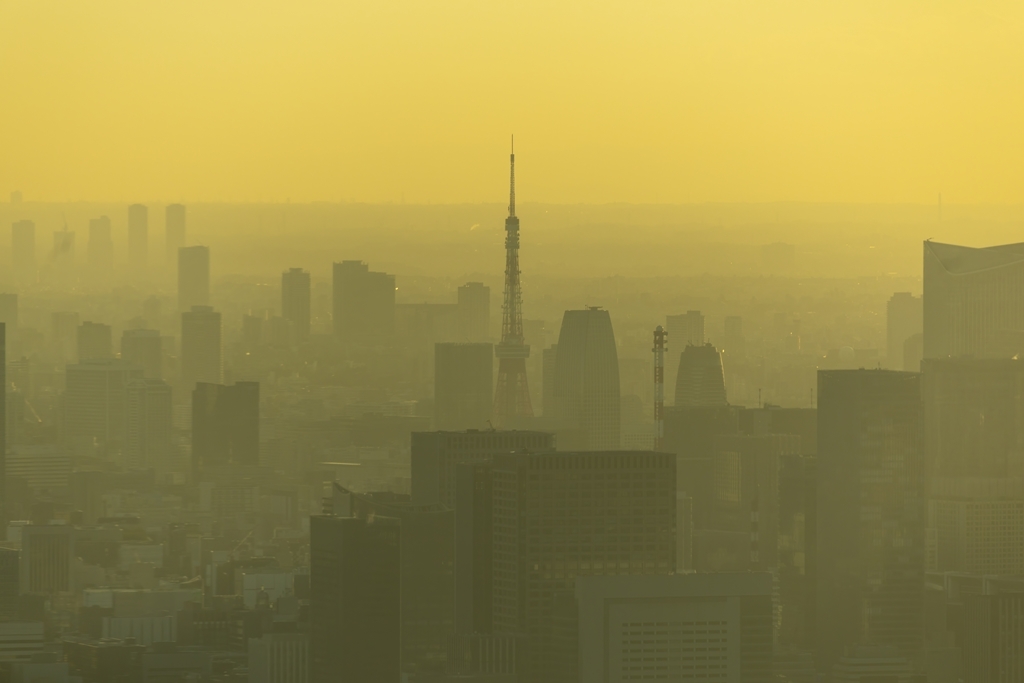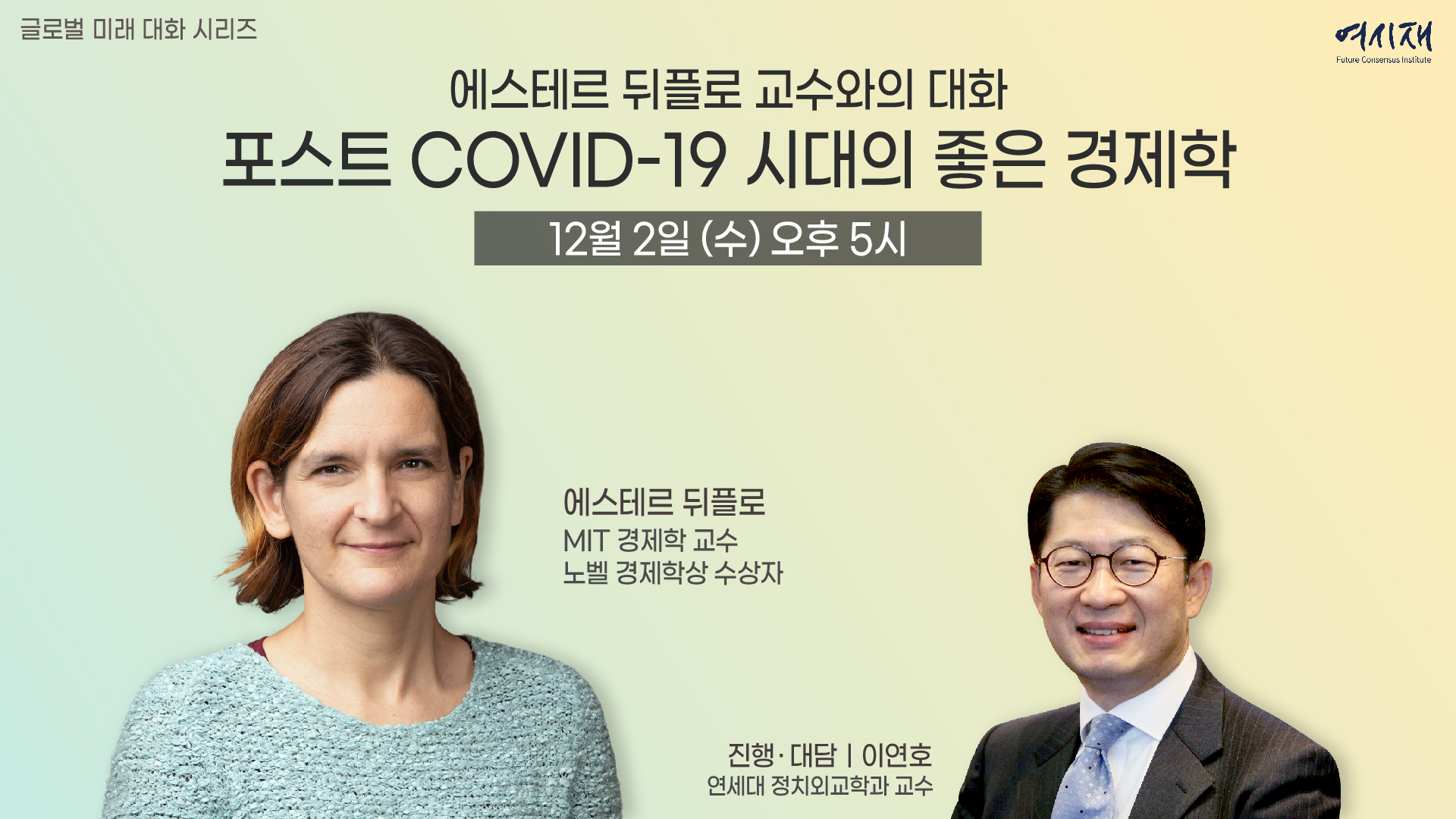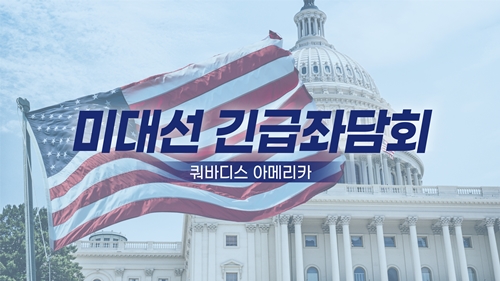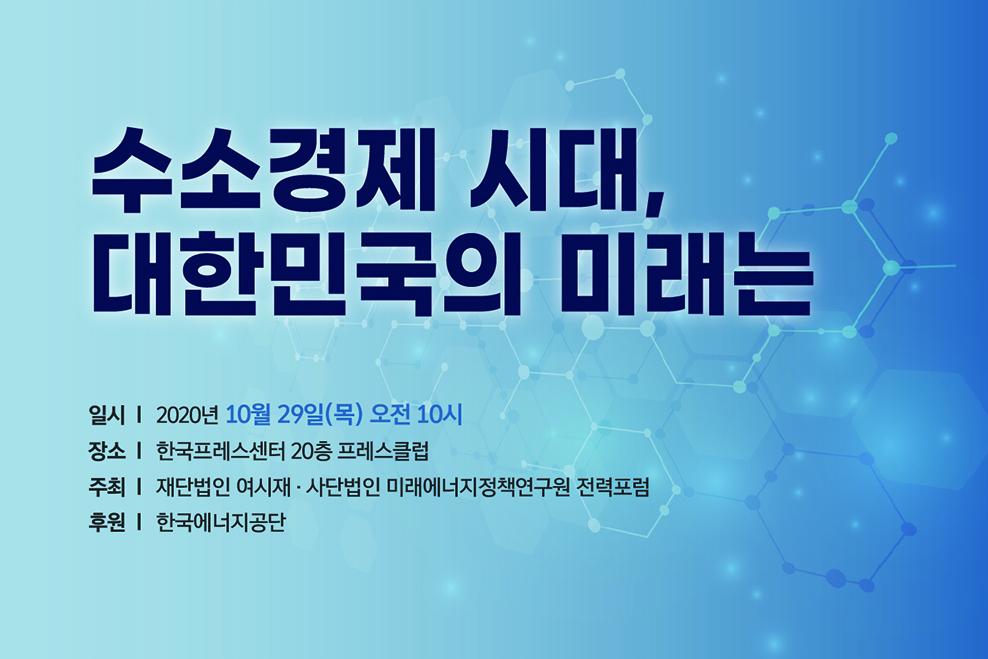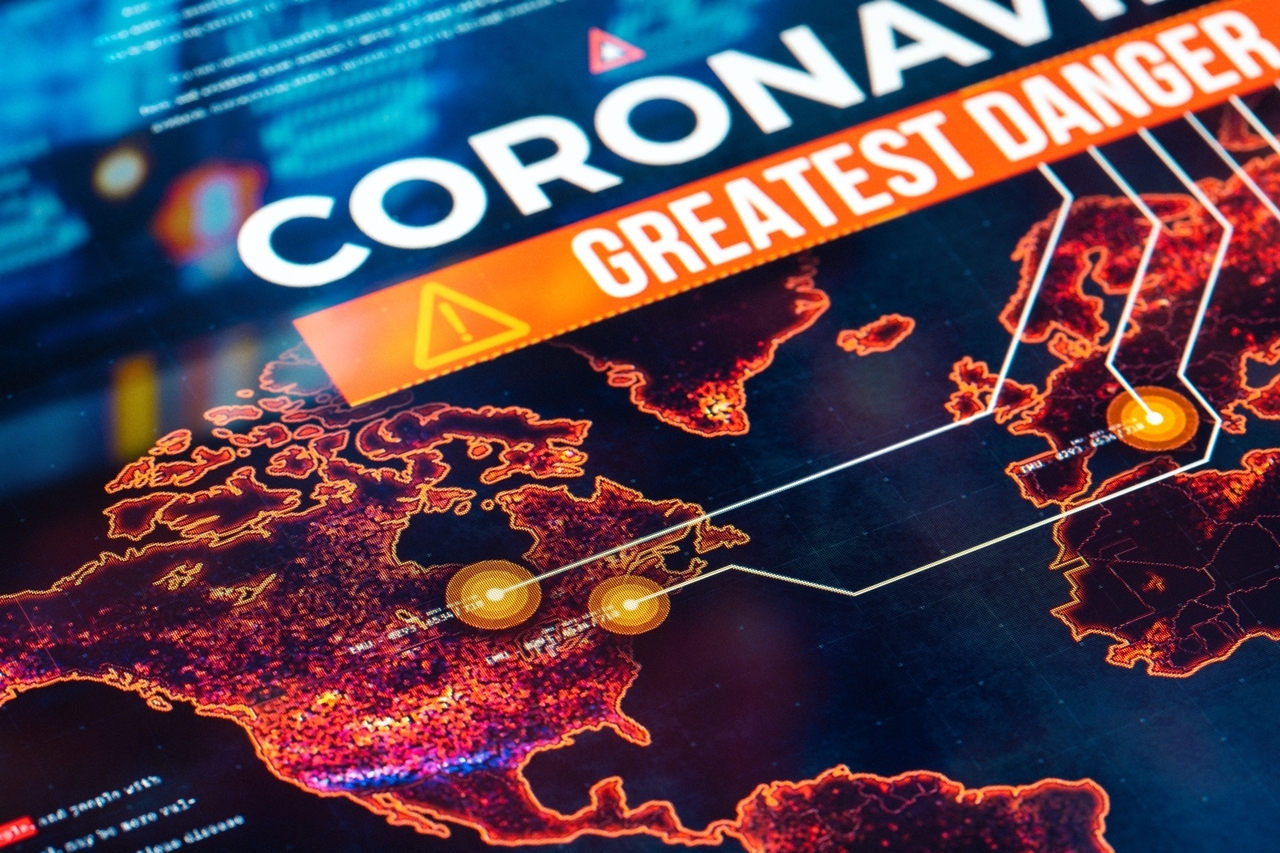Please join Yeosijae as we build a brighter future for Korea. Create your account to participate various events organized by Yeosijae.
- Insights
- |
- Global Order and Cooperation
[Discussion/COVID-19 ①] Evaluation: It is time to prepare for the reality of living alongside the virus
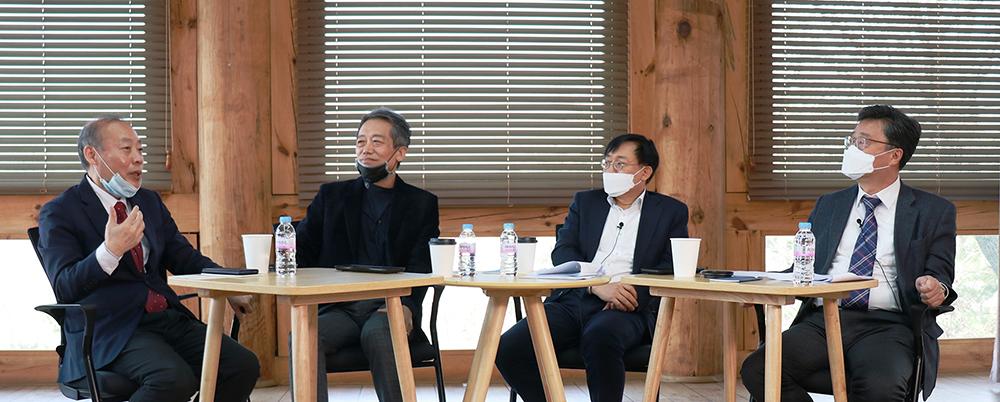
When will the COVID-19 outbreak subside, and how? What will things look like in the ‘post-COVID-19 era’? Right now, the important things are quarantine and providing living assistance. This is where the state’s administrative power should be concentrated. However, what is to come may be even more important. The COVID-19 pandemic will bring about broad and profound changes across the world. It will probably have a severe impact on societies, the global economic order, national governance and even international relations. Normal will become post-normal, and eventually we will face a new normal. We must prepare for this step by step, and this unknown path may become a great opportunity for South Korea. How will this happen?
Over the past few years, the Future Consensus Institute (Yeosijae) has pointed out that the established order of industrial civilization has reached its limits, and the Foundation has conducted a series of research looking towards the future. Based on the knowledge accumulated during this process, Yeosijae plans to continue to release content tailored towards these new developments. As part of these efforts, Yeosijae held a discussion forum to evaluate the current situation and examine the challenges that states and civic society are facing. The details of this discussion will be released in two parts.
|
(Program) |
|
Participants |
“This is going beyond the predictions of almost every expert”

Hong Yun-chul = This is not a situation that anyone can accurately forecast. The virus is spreading more rapidly and causing more damage than predicted by almost all experts. Other viral diseases such as SARS and MERS did not cause such large problems, as they tended to have a low fatality rate if they were highly contagious and a lower rate of contagion if they were highly fatal. Influenza is highly contagious but not fatal, while MERS was fatal but not very widespread. However, COVID-19 is not only highly contagious, but also has a fatality rate that approaches 10% among certain segments of the population. The pandemic has exceeded the predictions of almost every expert. There is no way of knowing when it will end. Most experts believe it will begin to die down around summer, but some are concerned that it may remain until winter and then return after undergoing a process of evolution. Some also believe that the virus is here to stay unless a vaccine or treatments are developed.
“The worst-case scenario is for the virus to return to the Northern Hemisphere after spreading to the Southern Hemisphere”
Kim Won-soo = If you look back on human history, it appears that the contagiousness and fatality of viruses have been on an upward trajectory together. COVID-19 evolved from SARS over 17 years, but it has become difficult to handle on a level that is incomparable with MERS. I am concerned that even if we find a solution to COVID-19, it will not be the end of it, and the virus will evolve even further and return again. This a new warning for humanity. Back when the UN was dealing with Ebola, the virus spread from the Southern Hemisphere to the Northern Hemisphere. Although the Northern Hemisphere is the problem right now, there are more countries in the Northern Hemisphere that have some level of response system in place. That is not the case in the Southern Hemisphere. When Ebola spread to the Southern Hemisphere, it was a really tough battle. Are there any international systems right now which can handle this? Is there anyone who can help the Southern Hemisphere to prevent the virus from coming back? And if this scenario becomes reality, do we have systems of international cooperation that can cope with it? I am very skeptical.
“It was not Trump himself who was optimistic, but American experts”
Hong Yun-chul = You’ve spoken about the worst-case scenario, but we still have a decent chance. While this may be a minority opinion, it is something that should be taken into consideration. However, that chance depends on how people respond. The graph of confirmed cases in China resembles a bell curve, with the number sharply falling off. This is something we don’t have to worry about. However, if the numbers remain consistent for some time without declining, the virus could run rampant in the Southern Hemisphere and then return to the Northern Hemisphere. And if it mutates during this process, it would be a completely different scenario. There are several concerning aspects of the current situation in the US and Europe. President Trump was still very optimistic up until about March 20. But that was not based on his own ideas, it was because academics in the US were optimistic. With the exception of a small minority, most experts got it wrong because they failed to seriously consider the contagiousness of the disease.
“South Korea is the only country with the ability to investigate close contacts”
Hong Yun-chul = There are several points of contention regarding the WHO. The WHO recommended placing restrictions on movement, but not closing national borders. In other words, it was a message telling at-risk segments of the population not to travel rather than telling entire countries or populations to stay put. South Korea is the only country who has accurately followed this recommendation, and this is because South Korea is the only country with a foundation that can support it. If a nation without a proper foundation followed this advice, it would be devastated immediately. China doesn’t have that kind of foundation, so it had to go into complete lockdown. But South Korea has a solid foundation on which to abide by the WHO’s guidelines. Ever since MERS, hospitals in South Korea have conducted four simulation training sessions every year. This allowed us to gain experience and results. As a result of this, not a single public hospital has collapsed since the outbreak of COVID-19. The problems were limited to a few private hospitals. We have got to where we are now because public hospitals served as the Maginot Line of defense. The basic model is complete prevention, like in China. However, there are many problems with this approach in democratic countries. Half-baked controls on borders and societies could actually exacerbate the problem. For all cases, we investigated the people they had been in close contact with and the scope of such connections. South Korea is the only country capable of doing this. This is how we got to where we are now without closing the borders.
“It is important to find balance between healthcare and the economy”
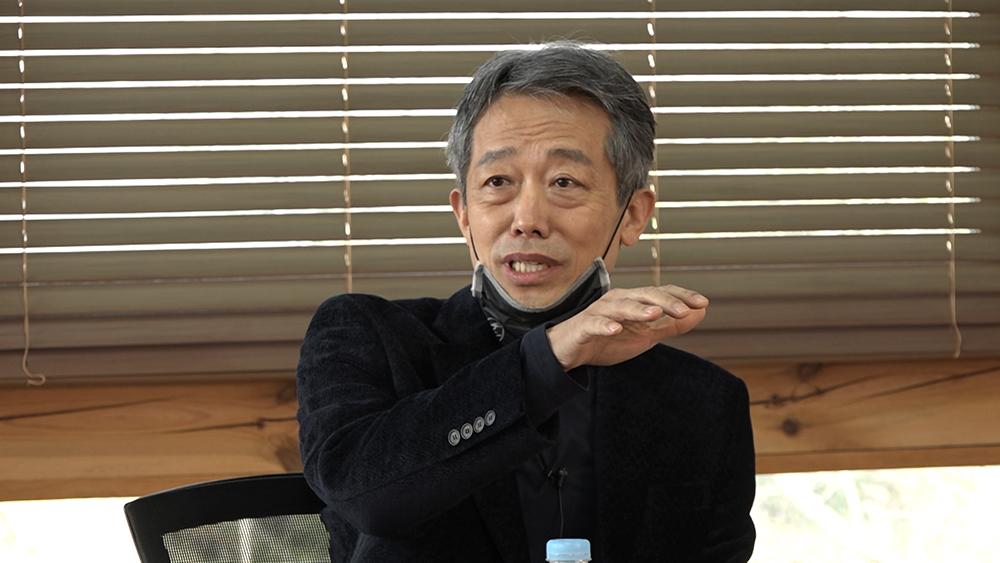
Kim Won-soo = Each country’s response should differ based on its style of governance. The model of complete state control and monitoring may be effective in the short-term, but in the long run it is more effective to inform the people and have them cooperate voluntarily.
Kim Hee-su = If people are barred from moving around then the economy will die. In the space of only a week, the US went into lockdown as the number of confirmed cases and deaths soared, but these restrictions will have to be lifted at some point. Some have predicted that the unemployment rate in the US will skyrocket to 30-50%. Ultimately, it’s about finding balance between healthcare issues and economic issues. If this becomes linked to political issues then it could also cause social conflicts.
“Korea has the foundation to be a catalyst for international cooperation”
Kim Won-soo = The problem is that international agreement is required to come up with suitable methods. This means creating guidelines that all countries can follow. If guidelines are created but only some countries follow them while others do not, it will only hurt the countries that do comply. International cooperation is needed now more than ever, but in reality each country is acting on its own. If we are unable to formulate a response plan then humanity will be helpless in the face of the virus. We could consider the UN. Back in the past, there was a lot of skepticism about whether the UN could really play a role in resolving regional conflicts. However, the complacent attitude of the WHO during the current situation does detract from this argument to some degree.
If it is true that South Korea has a solid technological foundation and has made the right choices, we could take the initiative in suggesting the formation of a consultative group between countries. South Korea is close to China, so we bore the brunt of the first wave. However, since South Korea gained a lot of experience and learned lessons from this process, we are in a good position to speak about the need for an international response system. South Korea has handled the response well and served as an exemplary international model. This was supported by voluntary cooperation from the public and innovative efforts from the medical community. South Korea is now in a position to point out the problems with the unilateral measures taken in some countries. We are right in the middle of these two approaches and can play a bridging role. I believe South Korea can be a catalyst for international cooperation.
“Living and treatment support centers are very important, and there are many aspects of South Korea’s IT and medicine that are worth showing to the world”

Kim Hee-su = When we talk about leadership, the health system is one aspect, but IT and artificial intelligence also have important roles. South Korea has outstanding ICT infrastructure. A project to sign information sharing agreements between mobile communications operators has already begun. South Korea could be adept at performing this role.
Hong Yun-chul = When we think about putting an end to the virus, the most important thing is early detection. South Korea is already employing IT to a large extent in early detection. We have many things that are worth showing to advanced countries, including not only our IT foundation but also medical aspects. One of the main examples of this is living and treatment support centers. This is where mild cases are separated from severe cases, and it took South Korea about a week to set up this system. Italy didn’t have a system like this, which meant that patients in severe condition died because they were unable to make it to a hospital.
“It’s possible to view this as connected to the Spanish flu, the Great Depression and World War II”
“Great starvation may follow once we have subdued the virus”
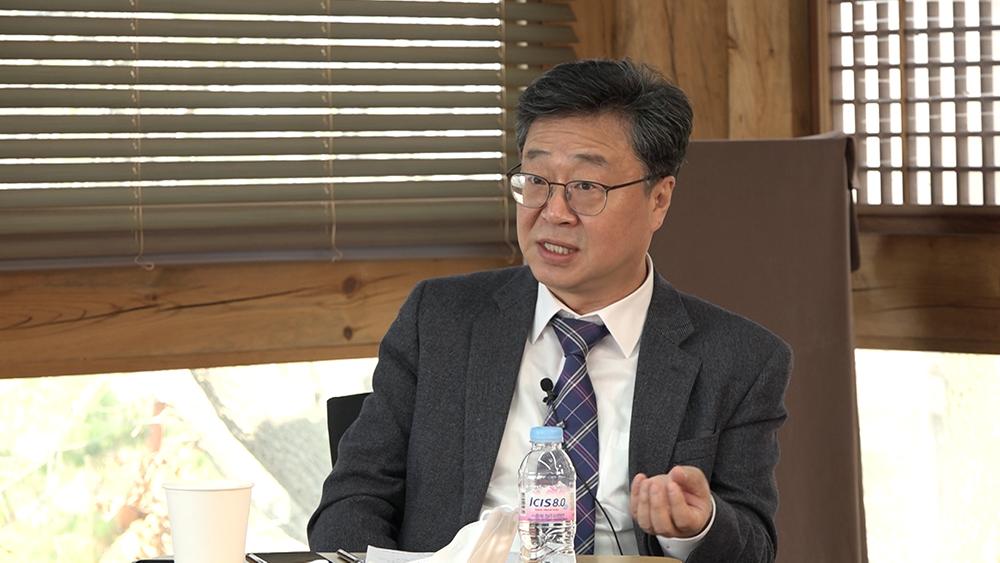
Jeon Byeong-jo = While it is important to subdue the virus as soon as possible, I am also concerned about permanent damage being caused. The Spanish flu brought about lasting damage. Following a war, it is normal for funds to be invested in restoration. A war leaves economies in ruin, but they are revived during the restoration process. However, unlike a war, a pandemic has a permanent impact. Data shows that the Spanish flu, the Great Depression and World War II are all linked. When making a decision on whether to implement dramatic containment policies, we should think about the permanent damage caused by the Great Depression. If COVID-19 is a short-term threat then strong controls are the correct path to take. But if it is a long-term issue then it is important to find a suitable balance, as Trump has considered. While we can’t be too optimistic, we should also remember that devastating poverty and starvation may follow in the wake of the virus once it has been subdued. In 2008 we faced a financial crisis that resulted from a credit collapse, but right now the virus could devastate everything from the real economy to the whole financial sector. To use a metaphor, the Bank of Korea and South Korean fiscal authorities have managed to prevent the patient from falling into shock for now thanks to a quick response, but they still haven’t fixed his broken leg.
“If we are able to give people confidence that the virus can be prevented through early detection, that’s already a success”
Hong Yun-chul = Prior to COVID-19, the number of influenza deaths in the US amounted to 15,000. The number of COVID-19 deaths is mounting (in the US), but will it reach 15,000? And yet there was no panic at all about influenza. This is because people believed that even if they caught the flu, it could be controlled with medication such as Tamiflu. If you caught influenza, all you had to do was treat it. But COVID-19 has destroyed that trust. The fear that the virus can’t be treated if you catch it is playing a significant part in this. I think that the economic damage may have resulted from this loss of trust. The issue is how we can win it back. It will take at least a year to develop a vaccine or treatment. The other way is to make people believe that the virus can be effectively prevented through early detection. If we are able to achieve both of these, people will begin to have confidence. People do have this trust to some degree in South Korea, which is why there hasn’t been any panic buying. However, in countries that lack this belief, the fear will lead to economic damage.
“2008-2009 was a ‘crisis of the 4 Fs’ which was overcome by the US-led G20. The biggest problem right now is the absence of such leadership”
Kim Won-soo = If we wind the clock back to the financial crisis of 2008 and the novel influenza epidemic of 2009, the UN described this period as the ‘crisis of the 4 Fs’ (food, fuel, flu and finance). At the time, novel influenza was less contagious than it is now, so the world was able to prevent it. The world got through the crisis by forming the G20. However, on this occasion the crisis may be far more complex and intense. The causal relationship is not yet completely clear, but we could face a financial crisis at the same time if we mismanage the economic response. In 2008, countries responded to the financial crisis through quantitative easing and lowering interest rates, but right now the real economy and global supply chains are both being shaken up. In other words, there is a limit to how much we can achieve simply by spending more. We must remember that if global supply networks falter, it could cause the biggest crisis since the Great Depression. We cannot let the virus create a spiral where it rotates between the Southern and Northern Hemispheres. We need to break the links of this vicious cycle as soon as possible. Once the spread of the virus has been reined in this season, there must be an immediate international response. In 2008, the US took the lead in forming the G20, but the biggest problem is that we can’t expect that kind of leadership right now.
“We need to consider reducing our reliance on China for pharmaceuticals and key components, and manufacturing them ourselves”
Kim Hee-su = Globalization has advanced even further in the 12 years between 2008 and now, and in some ways the world has become more reliant on China. Core components come from China, and supply chains have changed. The impact from changes that take place in China has grown to an extent that is almost incomparable to 2008. We must continue to reduce our reliance on China. Some are saying that at the very least, we should use distributed manufacturing for pharmaceuticals or core components, or produce certain components on our own. As we have seen in the example of Trump, the rise of nationalism has caused a move towards reducing reliance on China. Some have said that these political motivations should be leveraged to strengthen the production power of the domestic manufacturing industry. This was also the cause behind trade conflicts. While international cooperation is undoubtedly essential, each country should also develop the capacity to produce the things it needs on its own. This is something we should think about.
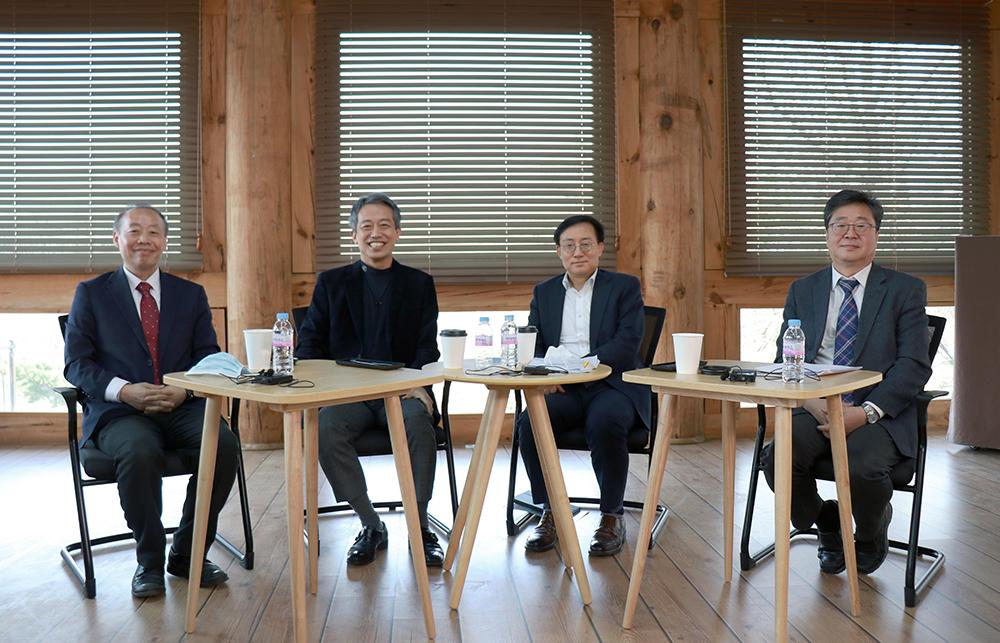
“Let’s make medicine a key growth strategy”
Hong Yun-chul = In South Korea, things that can be controlled, such as the Shincheonji Church and nursing homes, have been controlled to a large extent. However, since there is still a risk of transmission from abroad, traces of the virus may still remain unless we focus quarantine efforts in that direction, so the current response strategy is okay. If the response proves to be effective then it would enable us to move towards a safer society. We need to make sure this serves as a stepping stone towards a new society. Although there were some problems with quarantine in the early stages, the medical response has been fine since then. A lot of people must have been surprised to learn that South Korea had such a good medical system. People were able to appreciate the strengths of our medical system through comparisons to places like Europe and the US. Seoul National University Hospital has seen many patients since the early stages, but not a single staff member has become infected. South Koreans have always believed that other advanced countries had excellent medical systems, but when it came to the crunch it turned out that our system is much better than we thought. I believe it would be good for South Korea to treat medicine as a core growth strategy moving forward.
“As a country that relies on trade, South Korea needs to think of a way to return economic activity to normal”
Jeon Byeong-jo = Are we prepared for the possibility that this could become a long battle? If this occurs, we will have to live alongside the virus. Fortunately, South Korea is getting through the crisis while implementing a certain level of controls. However, if the virus spreads to the Southern Hemisphere and we’re in this for the long haul, what will be the next step for South Korea? Even more than people dying from the disease, the bigger tragedy would be people dying from starvation. It will take some time, but the UN should take the lead in making sure the Southern Hemisphere is prepared, and economies should be opened up (at a suitable time).
South Korea has been the beneficiary of free trade until now. Rather than COVID-19 itself, South Korea could suffer even more from the economic contraction. We are a country that needs to trade. Fortunately, South Korea’s medical system and IT have served as a model for rapid action. Trump will have heard from many people that this situation will not end any time soon. If the virus causes permanent damage due to an overly optimistic response in the early stages, countries may run short of some of the most fundamental necessities. The greatest damage would come from food shortages. We should look into this and be sure to not limit our considerations to overly positive scenarios. We need to find a way to restore economic activity to normal while living alongside the virus. Whether it is the emergence of the G20 through international collaboration, or something else, it is also important to lead international discussions on preventing transmission. We need to think about how we will be able to return to normal while living alongside the virus.
< Copyright holder © TAEJAE FUTURE CONSENSUS INSTITUTE, Not available for redistribution >

